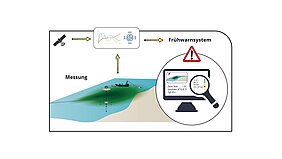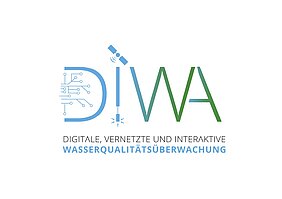Climate and land use changes as well as pollution threaten the quality of our water bodies in many ways. Only by understanding the complex processes that determine water quality is it possible to develop appropriate, forward-looking and sustainable protection measures.
Extreme events such as heavy rainfall, dry periods and the special water quality dynamics they cause, such as algal blooms, often do not have a long lead time. It is therefore essential to make use of high-resolution in-time and in-situ monitoring methods. A large number of sensor systems are already available for the online and on-site analysis of water quality parameters. However, the establishment of real-time early warning systems for the timely initiation of protective measures still requires further development.
The DIWA project aims to digitally connect existing sensor systems for algae growth, physical-chemical water condition, hydrodynamics and weather monitoring as well as online measurements of hygienic-microbiological water quality. A sensor for gold algae is also to be developed in view of the fish kill caused by the algae in the River Oder in 2022. Water quality parameters from satellites will also be included in order to identify spatial patterns.
In DIWA, recorded as well as historical data are digitally linked and coupled with a discharge forecast. An early warning system for water quality based on artificial intelligence is developed by digitally connecting the data. In-situ sensors, satellite data and laboratory measurements will be implemented on a pilot basis together with the early warning system developed in the project at an exemplary drinking water reservoir (Wahnbachtalsperre). This development is complemented by representative measurements with the sensors at the River Oder.

![[Translate to English:] Prüfstelle-Produktprüfung_Teststand Test centre and product testing](/fileadmin/_processed_/0/9/csm_TZW-Karlsruhe_Pruefung_Geraete-Teststand_377188946c.jpg)

























